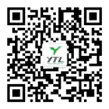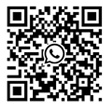What are the general guidelines for electric meters
But while most people know that utility companies use electronic energy meter to count a household’s or business’ electricity consumption, only a few people know how to read these meters or get their meter number or what to do about their meters when changing power providers. Also, only a few know the difference between a smart electricity meter, a bi-directional meter, and an analog one.Electricity meters are usually placed at the point where power lines enter a building. An electricity meter works for your building non-stop, tracking power usage and displaying the total amount of power you have used since it was installed.They measure the power usage in kilowatts (kWh).
A watt is the smallest unit of electric power, and a kilowatt equals a thousand watt-hours. Electricity meters can display information in digital or dials format. To get the amount of energy used in a month, or any other given period, simply take two readings and subtract reading number two from reading number one.There are different types of electricity meters. However, they all feature the same primary components and serve the same purpose.A meter number: A sequence of integers, unique to each household/premise and is used to identify energy usage. It’s usually printed, next to, or under the display and doesn’t change.The two main types of electricity meters are the analog (electromechanical) meter and the smart (automated) meter.
However, some jurisdictions require the installation of a third type of meter called the bi-directional meter if you install a microgeneration capacity.On the other hand, smart electricity meters use LED or LCDs and offer connectivity plus some instant functions such as two-way communication to keep your utilities aware of blackouts.Smart electricity meters are used in combination with energy management systems, including software and devices, to provide more dependable electrical services. They can show your household’s energy use, inform on ways to reduce energy wastage and save money and allow adjustment of appliances like the thermostats remotely.Of course, analog meters have an old-school display and don’t offer connectivity or smart functions.
They use electromagnetic induction to measure the energy passing through them and display the number on clock-like scales.Bi-directional meters measure electricity flow in two directions. These types of meters are available to premises/households who install solar, wind, biomass, or other renewable fuel generators in parallel with their main electricity supplying company’s electrical system.When generating your electricity to supplement what you are getting from your local electricity company, you need a way to count the energy coming in from the supplier, i.e., kilowatts delivered and the amount generated by yourself. Sometimes, you may generate excess energy than needed, and that is not a bad thing because you can export the excess electricity to the local grid for money or other tax credits.
A watt is the smallest unit of electric power, and a kilowatt equals a thousand watt-hours. Electricity meters can display information in digital or dials format. To get the amount of energy used in a month, or any other given period, simply take two readings and subtract reading number two from reading number one.There are different types of electricity meters. However, they all feature the same primary components and serve the same purpose.A meter number: A sequence of integers, unique to each household/premise and is used to identify energy usage. It’s usually printed, next to, or under the display and doesn’t change.The two main types of electricity meters are the analog (electromechanical) meter and the smart (automated) meter.
However, some jurisdictions require the installation of a third type of meter called the bi-directional meter if you install a microgeneration capacity.On the other hand, smart electricity meters use LED or LCDs and offer connectivity plus some instant functions such as two-way communication to keep your utilities aware of blackouts.Smart electricity meters are used in combination with energy management systems, including software and devices, to provide more dependable electrical services. They can show your household’s energy use, inform on ways to reduce energy wastage and save money and allow adjustment of appliances like the thermostats remotely.Of course, analog meters have an old-school display and don’t offer connectivity or smart functions.
They use electromagnetic induction to measure the energy passing through them and display the number on clock-like scales.Bi-directional meters measure electricity flow in two directions. These types of meters are available to premises/households who install solar, wind, biomass, or other renewable fuel generators in parallel with their main electricity supplying company’s electrical system.When generating your electricity to supplement what you are getting from your local electricity company, you need a way to count the energy coming in from the supplier, i.e., kilowatts delivered and the amount generated by yourself. Sometimes, you may generate excess energy than needed, and that is not a bad thing because you can export the excess electricity to the local grid for money or other tax credits.

YTL is a professional supplier of energy meter and AMI solution. the Top 100-enterprise with most investment value in Zhejiang. And“Yongtailong”is the famous brand of Zhejiang. With nearly 20 years' experience in energy metering, we devote ourselves to providing competitive projects and creating value for customers.
● Online + Offline. Provide cost-effectiv solutions
● Strict quality control mechanism.High quality assurance
● Five R&D centers,combine with hardware&software design, experiment and testing
● Global service capability, provide customers timely and effective solution
● Good customer feedback. Reliable after-sales service
● Online + Offline. Provide cost-effectiv solutions
● Strict quality control mechanism.High quality assurance
● Five R&D centers,combine with hardware&software design, experiment and testing
● Global service capability, provide customers timely and effective solution
● Good customer feedback. Reliable after-sales service

 English
English 简体中文
简体中文





.jpg?imageView2/2/w/500/h/500/format/png/q/100)
.png?imageView2/2/w/500/h/500/format/png/q/100)





